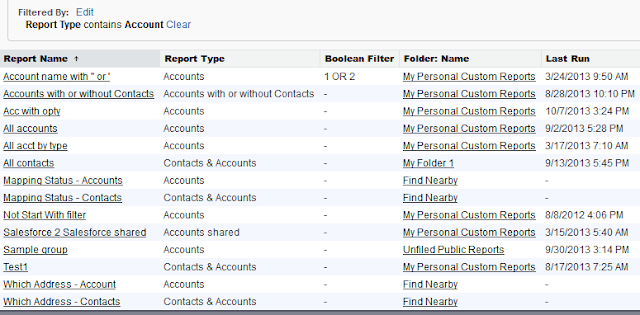* To create or update custom report types - “Manage Custom Report Types”
* To delete custom report types - “Modify All Data”
Out of the box, Salesforce provide many standard reports and standard report types, for some users, it may be sufficient, but for some cases, admin need to create new custom report type.
A report type defines the set of records and fields available to a report based on the relationships between a primary object and its related objects. Reports display only records that meet the criteria defined in the report type.
For example, an administrator can create a report type that shows only job applications that have an associated resume; applications without resumes won't show up in reports using that type. An administrator can also show records that may have related records—for example, applications with or without resumes. In this case, all applications, whether or not they have resumes, are available to reports using that type.
You can create custom report types from which users can report on your organization's reports and dashboards. When defining a custom report type, select Reports or Dashboards from the Primary Object drop-down list on the New Custom Report Type page.
But, how about deleting a report type? Yes, this is possible for user with “Modify All Data” permission (usually system admin).
You need to aware that deleting a custom report type will
- Permanently delete the Custom Report Type (no Recycle Bin)
- Delete any reports based on the Custom Report Type (no Recycle Bin)
- Invalidate any dashboard components based on the deleted reports
So... you really need to be careful and it is always good to find out which reports are created using report type that will be deleted?
How to find those reports? Create a new report type with Primary Object = Reports
I am not going to explain how to create report type, but you can see below screenshots:
Remember, you always can remove or rename fields to show in a custom report type from "Fields Available for Reports" section.
Next, create new report using report type above to find out which reports are created using particular report type.


No comments:
Post a Comment